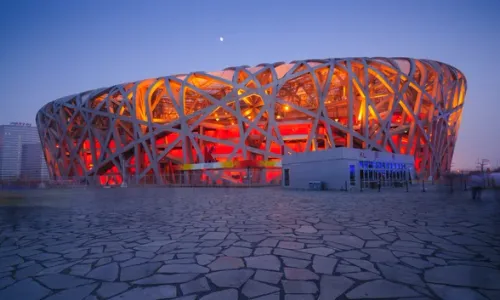Answers For The Beijing Olympic Stadium
Answers and detail explain for The Beijing Olympic Stadium
Explain
The Beijing Olympic Stadium

Good morning, everyone. Today, as part of our 21st century architecture series, I’m going to tell you a bit about a remarkable structure which I’m sure you’re all familiar with, the stadium that was build for the 2008 Olympics in Beijing.
OK, let’s start with a few background details. The stadium was designed by Herzog and de Meuron, a firm of architects from Switzerland. They studied Chinese ceramics, er, plates, cups, and bowls, to get inspiration. 1The stadium is actually two structures, which are completely separate from each other. In the middle 2there's the seating area, which was originally designed for 100,000 spectators but this had to be reduced to 90,000. Around this area is 3the frame, which is made of 110,000 tons of steel in horizontal beams and vertical columns. The architects wanted the roof to open and close, but they changed it because it could have been dangerous if there was an earthquake. The big advantage of changing it was that it reduced the cost by several million dollars, 4although the building still came to an incredible $423 million.
So, what makes this stadium such an amazing building? Let’s start with the general impression it creates. For this, 5the best place to look at it is from a distance. Why from a distance? Well, that’s where you'll really get an impression of what it looks like and how big it is. You'll also notice how it really stands out in its surroundings. This is not just because of its size - and it is big - 6but also because it stands on a low hill which helps make it higher than any other buildings in the area. 7Then there’s its unusual shape, which has helped to give it its nickname of the Bird’s Nest. The unusual shape of the stadium also does something else. You see, 8if you stare at it for long enough, you also get the impression that this structure isn’t standing still, that it’s moving in different directions, almost like it’s a living, breathing creature. This is especially true at night, when the stadium is lit up from inside with lights that continually change colour.
In the stadium, everything changes. There are visitor entrances all around the outside, and 9as you enter, you get the impression that you’re walking into a forest, and not just any forest, but something magical from the children’s story. 10As you cross towards the spectator area, coloured light comes through the clear roof panels, creating strange pools of light and shadow. Now you’re no longer in a forest, but on a set that's been build for a fantasy film. It really is a remarkable experience, and it's only once you’re inside the spectator area that you finally realise you’re in a sports stadium.
Write NO MORE THAN TWO WORDS AND/OR A NUMBER for each answer
The Beijing Olympic Stadium
Background details
Inspired by Chinese ceramics.
Consists of 1 (two structures | 2 structures) , which are not physically connected.
Can hold 2 (90000 spectators)
Uses 110,000 tons of steel in its horizontal 3 (beams) And vertical columns.
Cost $4 (423 million)
General impressions
Ideally seen from a 5 (distance) to get an idea of shape and size.
Built on a 6 (low hill) to emphasize its size.
The stadium is known as the Bird’s Nest because of its 7 (unusual shape)
Gives the impression that it is 8 (moving)
Inside
People feel like they are entering a 9 (magical forest | forest) when they walk into the stadium.
The clear roof panels let in 10 (coloured light | colored light)
![[Forecast Q2-2025] - Biology lecture](https://static.helik.app/reading/8fd3d7d2-ccf9-47a3-8920-2e7a3b0d6607)
![[Forecast Q2-2025] - Living in the City](https://static.helik.app/reading/1a60bcf3-f3a7-4e9b-97a2-94d156a0de3b)
![[Forecast Q2-2025] - Student Union](https://static.helik.app/reading/fb443123-8c1d-447e-8c79-5a01650f4754)
![[Forecast Q2-2025] - Fruit-picking Job in an Orchard](https://static.helik.app/reading/e1968346-6c55-44ae-b8d3-f6a4fb7207b9)
![[Forecast Q2-2025] - University Crime Prevention](https://static.helik.app/reading/bdda593e-16d6-4c72-8a12-b116e917b27c)
![[Forecast Q2-2025] - Business Course](https://static.helik.app/reading/3308e282-99a6-4bcb-9d22-0b488701d968)
![[C20T1] - Choosing a restaurant](https://static.helik.app/reading/e9b21123-c43c-42fb-88b7-5d0be3a37e03)
